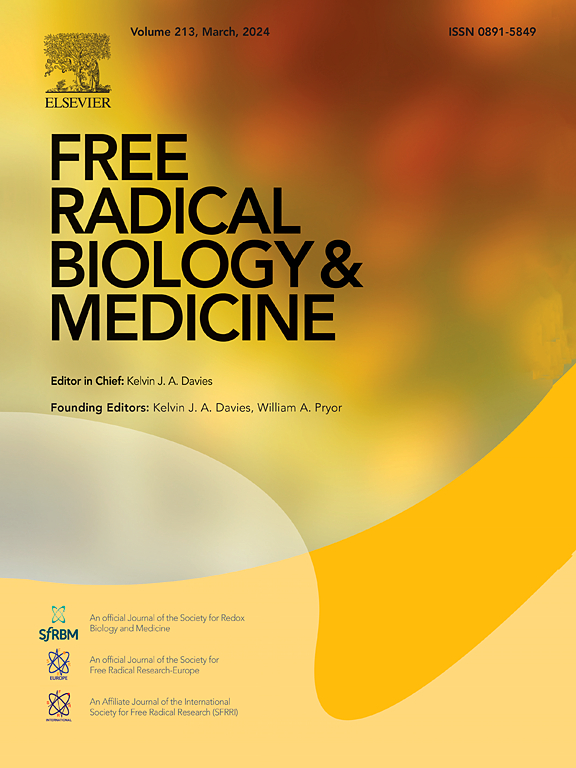Eight weeks of high-intensity interval training alters the tongue microbiome and impacts nitrate and nitrite levels in previously sedentary men
IF 7.1
2区 生物学
Q1 BIOCHEMISTRY & MOLECULAR BIOLOGY
引用次数: 0
Abstract
Nitric oxide (∗NO) is a key signalling molecule, produced enzymatically via ∗NO synthases (NOS) or following the stepwise reduction of nitrate to nitrite via oral bacteria. Exercise training upregulates NOS expression and improves systemic health, but its effect on oral health, and more particularly the oral microbiome, has not been investigated. We used an exercise training study design to investigate changes in the tongue dorsum microbiome, and in nitrate and nitrite levels in the saliva, plasma and muscle, before, during and after an exercise training period.
Eleven untrained males (age 25 ± 5 years, mass 64.0 ± 11.2 kg, stature 171 ± 6 cm, O2peak 2.25 ± 0.42 l min−1) underwent 8-weeks of high-intensity interval training (HIIT), followed by 12-weeks of detraining. The tongue dorsum microbiome was examined using Pac-Bio long-read 16S rRNA sequencing. Nitrate and nitrite levels were quantified with high-performance liquid chromatography. Grouped nitrite-producing species did not change between any timepoints. However, HIIT led to changes in the microbiome composition, increasing the relative abundance of some, but not all, nitrite-producing species. These changes included a decrease in the relative abundance of nitrite-producing Rothia and a decrease in Neisseria, alongside changes in 6 other bacteria at the genus level (all p ≤ 0.05). At the species level, the abundance of 9 bacteria increased post-training (all p ≤ 0.05), 5 of which have nitrite-producing capacity, including Rothia mucilaginosa and Streptococcus salivarius. Post-detraining, 6 nitrite-producing species remained elevated relative to baseline. Nitrate increased in plasma (p = 0.03) following training. Nitrite increased in the saliva after training (p = 0.02) but decreased in plasma (p = 0.03) and muscle (p = 0.002).
High-intensity exercise training increased the abundance of several nitrite-producing bacteria and altered nitrate and nitrite levels in saliva, plasma, and muscle. Post-detraining, several nitrite-producing bacteria remained elevated relative to baseline, but no significant differences were detected in nitrate or nitrite levels. Switching from a sedentary to an active lifestyle alters both the microbiome of the tongue and the bioavailability of nitrate and nitrite, with potential implications for oral and systemic health.

求助全文
约1分钟内获得全文
求助全文
来源期刊

Free Radical Biology and Medicine
医学-内分泌学与代谢
CiteScore
14.00
自引率
4.10%
发文量
850
审稿时长
22 days
期刊介绍:
Free Radical Biology and Medicine is a leading journal in the field of redox biology, which is the study of the role of reactive oxygen species (ROS) and other oxidizing agents in biological systems. The journal serves as a premier forum for publishing innovative and groundbreaking research that explores the redox biology of health and disease, covering a wide range of topics and disciplines. Free Radical Biology and Medicine also commissions Special Issues that highlight recent advances in both basic and clinical research, with a particular emphasis on the mechanisms underlying altered metabolism and redox signaling. These Special Issues aim to provide a focused platform for the latest research in the field, fostering collaboration and knowledge exchange among researchers and clinicians.
 求助内容:
求助内容: 应助结果提醒方式:
应助结果提醒方式:


